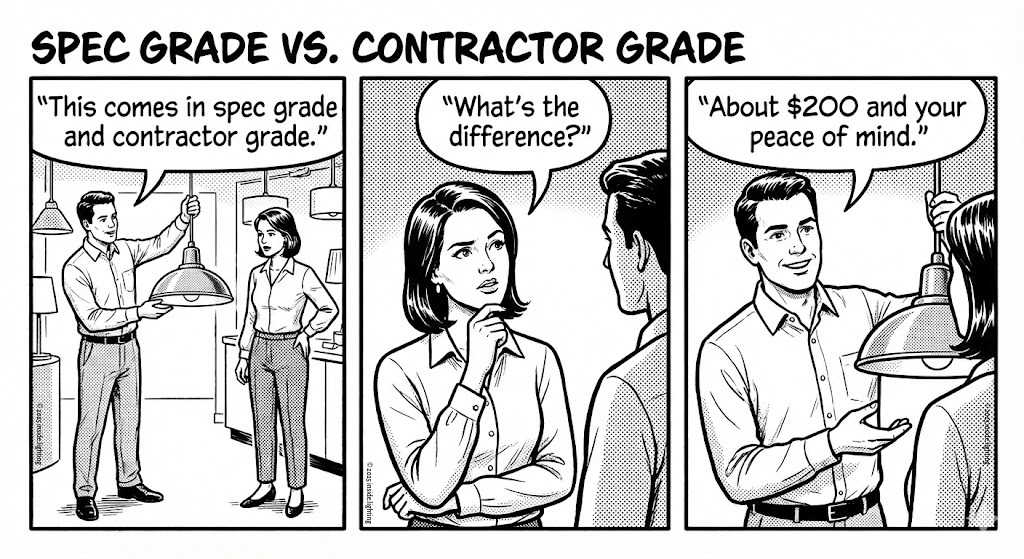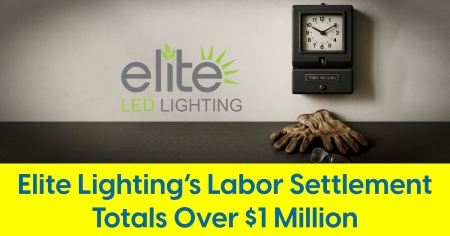October 15, 2025
What’s Happening at DOE, and Who’s Driving It?

Funding cuts, silent layoffs and vanished lighting initiatives raise questions
In less than a year, the U.S. Department of Energy (DOE) has gone from quietly pruning its website to publicly swinging a fiscal axe. The result: hundreds of federal energy projects canceled, layoffs across the agency and a lighting industry still searching for answers.
Earlier this month, DOE confirmed the termination of 321 financial awards across 223 projects — a staggering $7.56 billion in cuts. The announcement came wrapped in bureaucratic language, citing “inadequate documentation” and a failure to meet the administration’s evolving definition of national and energy security. But beneath the justification lies a simple fact: this is the largest rollback of clean energy funding in DOE’s recent history.
And for those who thought this was the end of it — think again. DOE called it a “partial list.”
Of course, lighting represents just a narrow slice of the Department of Energy’s broader mandate which spans everything from grid modernization, sustainable fuels, and solar deployment to nuclear security, carbon capture, and critical materials supply chains. But even this small corner of the portfolio plays a meaningful role in shaping efficiency standards, innovation, and public-sector procurement across the built environment.
A Leaked Spreadsheet and a Second, Bigger Axe
Days after the official announcement, Canary Media obtained a spreadsheet that casts a longer shadow: an alleged DOE “recommendation list” of additional projects — totaling nearly $24 billion — proposed for termination. The document includes hundreds of projects beyond the 223 officially cut, each marked with the word “terminate.”
DOE insists it hasn’t made final decisions about this second wave. In a statement, the agency said: “No determinations have been made other than what has been previously announced.” But several companies on the leaked list told Canary Media they’ve received no official notice — and no guidance on what to expect.
Insiders suggest the list reflects internal DOE recommendations sent to the White House. If true, it points to a more systemic sweep still in motion — one that could reshape the federal energy landscape far beyond lighting.
Related, the United States Green Building Council (USGBC) reports that the Administration has particularly targeted DOE’s Office of Energy Efficiency and Renewable Energy (EERE) for cuts, proposing a nearly 75% reduction from current funding levels. EERE houses many programs, including the Building Technologies Office, the Commercial Buildings Integration program, the Federal Energy Management Program, and other functions supporting the buildings community. One area where the President’s DOE budget proposes increased funding is in the Energy Information Administration’s consumption surveys for commercial, residential and industrial buildings.
Layoffs Multiply, But No One’s Home to Manage Them
The money isn’t the only thing disappearing. As federal agencies absorb the impact of the October shutdown and ongoing austerity measures, people are vanishing too. According to court filings from October 10, DOE has laid off 187 employees in recent weeks.
Crucially, the document notes that DOE did not recall any employees to manage Reduction in Force (RIF) activities — meaning even the layoffs are being handled with reduced capacity. And this follows earlier reporting from Inside Lighting, which found between 1,200 and 2,000 DOE staff were let go back in February including staff from Pacific Northwest National Laboratory (PNNL).
No internal team, shrinking external clarity, and a growing list of uncertainties. As one senior official told the court: “More RIFs are coming.”
L-Prize and Lighting: Dead Silence, Ten Months and Counting
The $10 million L-Prize was supposed to be a crown jewel of the DOE’s commercial lighting innovation strategy — the final phase designed to spur real-world manufacturing and deployment of next-gen fixtures. That was January.
By March, a disclaimer appeared on the L-Prize website. It noted that all funding opportunities were “under evaluation.” A quiet bureaucratic warning. Since then, nothing. No press releases. No revised timelines.
In October, Inside Lighting contacted DOE press officials again. The reply — from Deputy Press Secretary Olivia Tinari stated:
“The U.S. Department of Energy (DOE) is evaluating all funding opportunities, including prize challenges, to ensure appropriate resources are allocated efficiently, and that the Department's initiatives are in line with the statutory mission of DOE and the policies and priorities of the Administration and DOE.”
It’s the exact same phrasing that’s been on the L-Prize website for months. Either nothing has changed, or they don’t want to say what has.
What Happens If the Lights Stay Off?
The L-Prize delay is more than a bureaucratic hiccup. If DOE enacts the $24 billion in additional terminations, key initiatives that support energy-efficient lighting — including the Solid-State Lighting (SSL) program, the Integrated Lighting Campaign, FEMP purchasing guidance, and even public-private research partnerships — could be next on the chopping block.
PNNL’s role in lighting science, long central to federal lighting policy, may already be under strain but, understandably, none of our PNNL contacts are talking. With reduced DOE staffing and some roadmap fogginess, even well-funded programs may be stalled by inertia.
So far the public has not been told which lighting programs are safe, which are at risk, or how decisions are being made. The industry remains in the dark — in every sense.
Silence Is the Message
The Department of Energy says it's reviewing projects to ensure they “align with Administration priorities.” But no one’s saying what those priorities are. With layoffs deepening and communication dwindling, it’s hard not to wonder: is the silence strategic?
For now, all anyone can do is wait. In an era of rolling blackouts, power grid instability, and clean energy urgency, the lighting industry is left looking for signals. At this point, even a blackout would offer more clarity.










